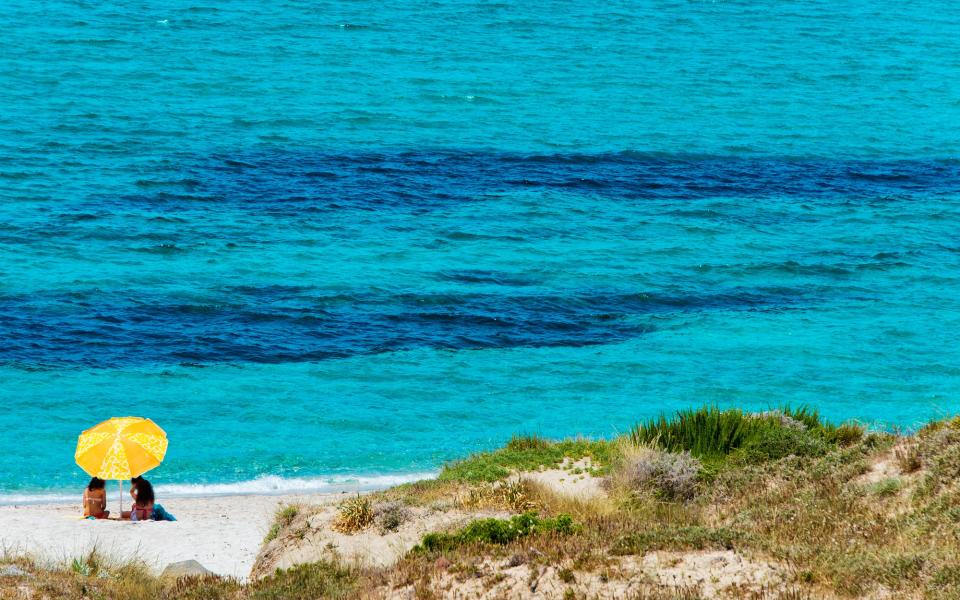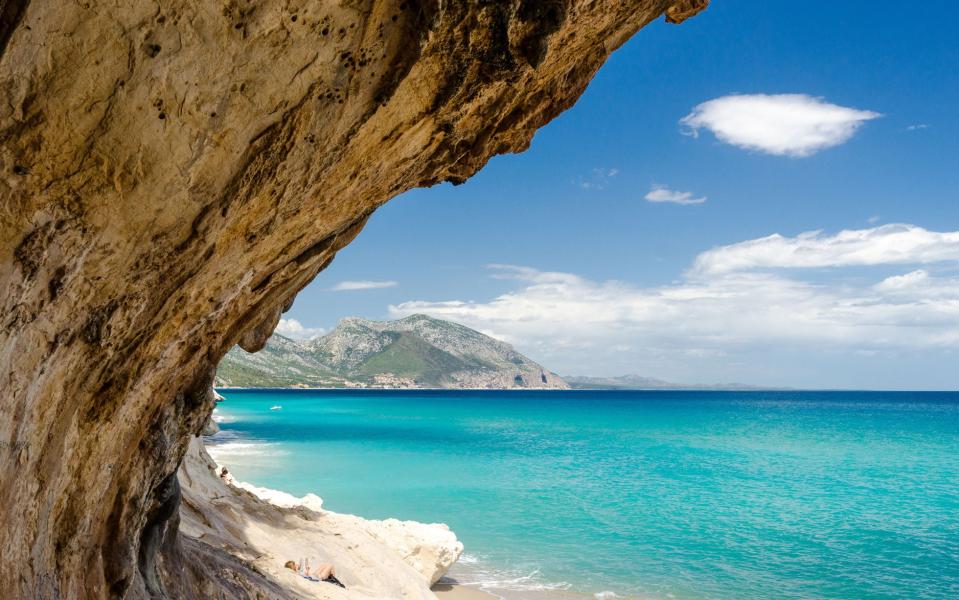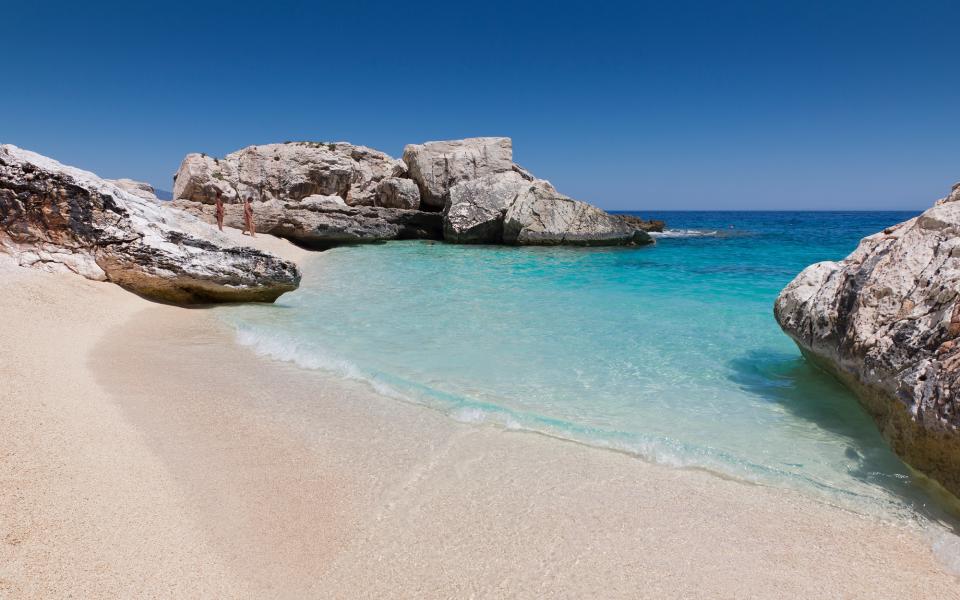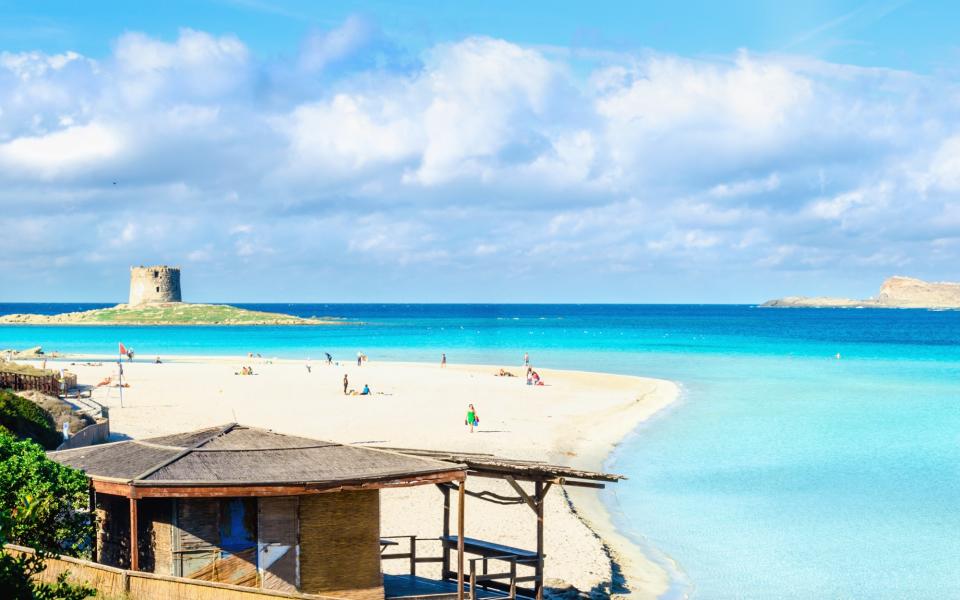The 10 most incredible beaches Sardinia

The beaches in Sardinia are among the finest in the world, and with over 1,000 kilometres of coastline, there’s no shortage of spectacular places to pitch up, whether surrounded by archaeological ruins, looming granite cliffs or the local macchia – and of course all are lapped by impossibly limpid turquoise sea. Here are 10 of the best, but you can also take a boat out and find your very own private cove.
For further inspiration, see our guide to Sardinia and the island's best hotels, restaurants, nightlife and things to do.
South
Poetto Beach
A short bus ride from the city centre, Cagliari's main beach faces the Gulf of the Angels and stretches from Sella del Diavolo up to the coastline of Quartu Sant'Elena. With almost eight kilometres of white sand, the beach is served by dozens of traditional wooden kiosks, ‘baretti’, where food and drink is served day and night, plus diving centres and surf schools. The promenade teems with bladers, buggies and bikers, but the 16th-century watchtower is a reminder that the sea wasn’t always such a friendly proposition.

North-east
Spiaggia Poltu Di Li Cogghj
Spiaggia Poltu Di Li Cogghj is also known as Principe Beach, after Prince Aga Khan, who considered it to be the most beautiful in the Costa Smeralda. It’s not easy to reach, involving a 10-minute walk down a rough path (don’t wear flip-flops), but it’s well worth the effort: a fine sand beach surrounded by granite rocks and Mediterranean macchia faces crystal clear blue sea. There are no bars or restaurants here, so bring a packed lunch and plenty of water.

Cala Spalmatore
Off the northeast coast of Sardinia lies the spectacular La Maddalena archipelago, made up of seven islands, with a total of over 300 impeccably clean beaches, thanks to the fact that the entire area is protected as part of the Parco Nazionale dell’Arcipelago. Once here, the choices are many. After a wander around the elegant port, head off to accessible Cala Spalmatore or Spiaggia Bassa Trinità, or jump on another boat to visit Budelli, famous for its Spiaggia Rosa. 'Pink Beach' owes its name to the crushed coral and shells that are inhabited by tiny pink microorganisms. The sand today is less pink than it once was, as so many people decided to take some away with them, so these days it’s not possible to disembark, but boats still drop anchor off the coast so that you can swim against the unrivaled backdrop.

North-west
San Giovanni
Visible well before you arrive, thanks to its 12th-century hilltop Castello della Fava (Bean Castle), the medieval village of Posada is a delightful maze of little streets and cafés. But it’s biggest claim to fame is its beaches: San Giovanni and nearby Su Tiriarzu, Iscraios, Due Pini and Orvile have all received the prestigious Cinque Vele Legambiente in recognition of the protected status of the surrounding flora and fauna. You can also travel down the Rio Posada river in a canoe to admire the population of pink flamingos.

East
Cala Luna
South of Olbia are some of Sardinia’s most famous mountains, and the Gennargentu massif makes an incredible backdrop to the bay of Cala Luna. It’s possible to make a two-hour hike along trails to this secluded little beach, but most take a boat from the nearby ports of Cala Gonone, Santa Maria Navarrese, and Arbatax. There are plenty of caves to explore if you tire of the turquoise sea, and a further 40-minute scenic trek brings you to the famous Grotta del Bue Marino. The wild charm of the bay was the setting for Italian cult movie 'Swept Away' by Lina Wertmuller.

Cala Mariolu
On the central eastern coast lies one of Sardinia’s jewels, Cala Mariolu. It takes its name from the monk seal that would steal (mariolu means 'thief') the day’s catch from the local fishermen. Surrounded by cliffs that rise to a height of 500 metres, the beach is only accessible by a fairly challenging trek through Mediterranean scrub, so those without time (or experience) prefer to take a boat to enjoy the sandy beach, speckled with pink and white pebbles, surrounded by clear blue waters. It’s an exceptional location for snorkelling and diving.

Cala Goloritzé
Cala Goloritzé is another exquisite beach renowned for its crystal clear waters, and it can be reached by a less challenging trail through Holm wood forest. Boats leave from Cala Gonone, but it’s also possible to hire a gommone (inflatable) with an outboard motor. The backdrop of Monte Caroddi is spectacular, and popular with free climbers, but most choose to admire the 100-metre high pyramid-shaped rock from the white pebble beach, hoping to catch a glimpse of the rare Eleanora falcon that has made its home here.

West
Oristano
On the central western coast, an hour’s drive north of Cagliari, lies the medieval city of Oristano, and the nearby Sinis Peninsula, which stretches over 26,000 hectares. The marine-protected site has everything: flat white beaches, pine woods, salt pans, lagoons that are first-rate for snorkelling, fossil-laden cliffs for exploring and, thanks to a northwesterly mistral wind, it’s also ideal for kitesurfing and windsurfing all year round. There are even opportunities for whale-watching, and a chance to visit the nearby Phoenician ruins of Tharros.

North
La Pelosa
An hour from Alghero, the town of Stintino is a delight in itself, located between the two picturesque harbours of Porto Mannu and Porto Minori. But just beyond the town, via a series of wooden walkways, you’ll find one of Sardinia’s most enticing beaches, La Pelosa. With white sands lapped by turquoise sea, it’s a well-frequented destination, so continue on to the wild and unspoilt Capo Falcone at the end of the peninsula. The beach is overlooked by a Spanish watchtower and has views across to the island of Asinara. Stintino’s Museo della Tonnara tells the story of the town’s tuna-fishing industry, and there are plenty of restaurants serving the fish.

Porto Pollo
A 10-minute drive north of Palau you’ll reach the top wind- and kite-surfing destination in the north, Porto Pollo (Chicken Harbour – nope, no idea either). Thanks to its length and location, there’s always somewhere where the surfing is good, and the addition of a few surfing schools means it attracts a younger crowd keen to learn how to catch a wave – check out the number of camper vans in the car park. But there are also more sheltered coves, and plenty of visitors locate a secluded bit of beach, surrounded by dunes and Sardinian macchia, to swim and laze, and later gaze at the sunset. At some point, most find their way to one of the beach shacks (Rupi’s is a fave) for refuelling and music.



